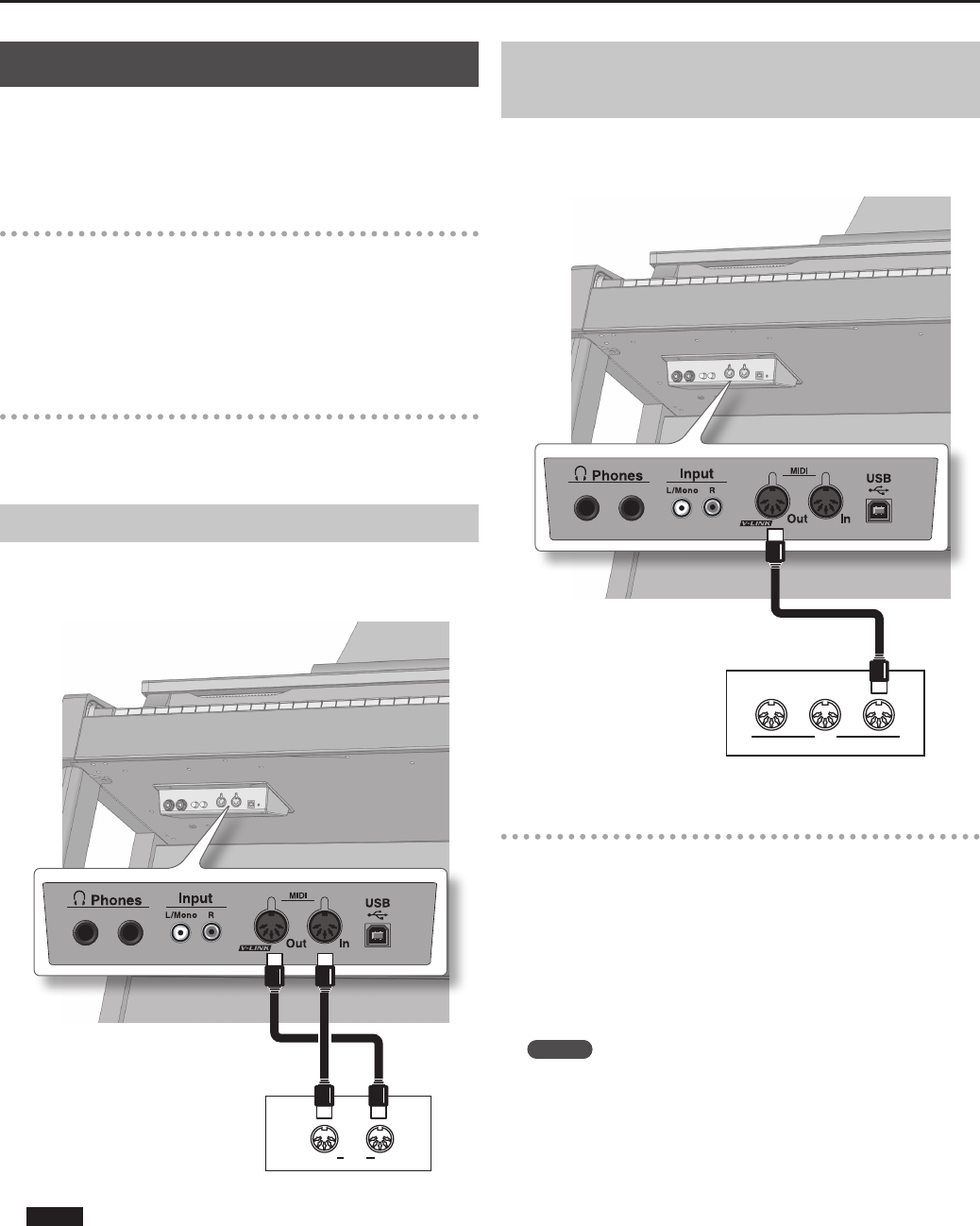
86
Connecting Other Devices
Connecting to MIDI Devices
By connecting an external MIDI device and exchanging performance
data, you can control one device from the other.
For instance, you can output sound from the other instrument or
switch Tones on the other instrument.
What’s MIDI
MIDI, short of “Musical Instrument Digital Interface,” was developed as
a universal standard for the exchange of performance data between
electronic instruments and computers.
The HPi-7F is equipped with MIDI connectors to let it exchange
performance data with external devices. These connectors can be used
to connect the HPi-7F to an external device for even greater versatility.
Caution when connecting a MIDI device
• To prevent malfunction and damage to your speakers, always be sure
to turn the volume all the way down on all your equipment, then
switch the power o on everything before you make any connections.
Connecting the HPi-7F to a MIDI Sequencer
Make these connections if you want your performance on the HPi-7F
to be recorded on the MIDI sequencer, or a recorded performance to
be played back by the sequencer.
MIDI cable
MIDI sequencer
OUT
MIDI
IN
NOTE
When the HPi-7F is connected to a MIDI sequencer, set it to “Local
O” (p. 87).
Playing a MIDI Sound Module from
the HPi-7F
Make these connections if you want performance data from the HPi-7F
to be sent to a MIDI sound module, causing the MIDI sound module to
produce sound.
MIDI cable
MIDI sound module
THRU OUT
MIDI
IN
Connections
1. Minimize the volume of the HPi-7F and of the MIDI device.
2. Turn o the power of the HPi-7F and of the MIDI device.
3. Use a separately sold MIDI cable to connect the HPi-7F to the
MIDI sound module (see illustration).
4. Turn on the power of the HPi-7F and of the MIDI device.
5. Adjust the volume of the HPi-7F and of the MIDI device.
6. Set the MIDI transmit channel if necessary.
MEMO
For the MIDI transmit channel setting, refer to “Changing the MIDI
Transmit Channel (MIDI Transmit Channel)” (p. 87).


















